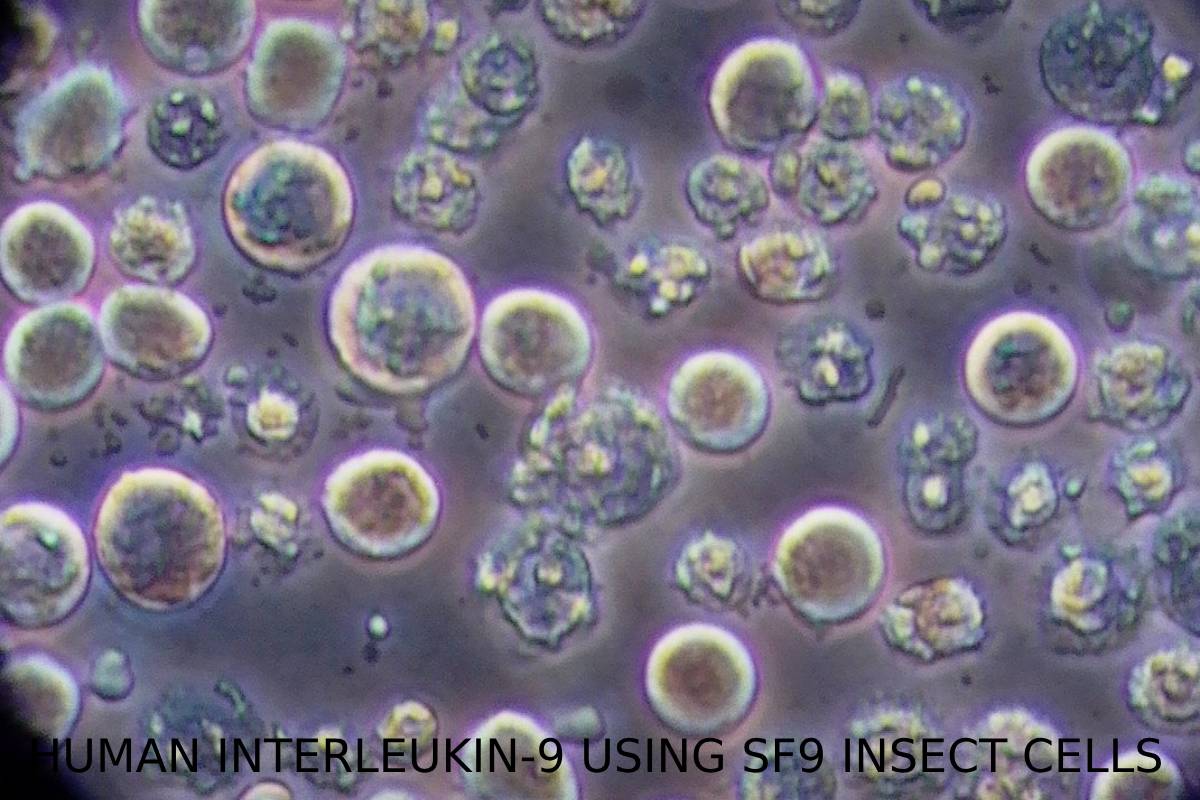Interleukin 9 (IL-9) is a cytokine that plays a role in various immune responses, including allergic inflammation and defense against parasitic infections. IL-9 is produced by a variety of T cells, including T-helper 9 (Th9) cells, and can influence the function of multiple cell types, such as mast cells, B cells, and epithelial cells.
Sf9 cells are derived from Spodoptera frugiperda (fall armyworm) ovarian cells and are commonly used in the Baculovirus Expression Vector System (BEVS) for the production of recombinant proteins. This system is advantageous due to its high protein yield, proper protein folding, and post-translational modifications similar to those in higher eukaryotes.
Production of Human IL-9 in Sf9 Cells
Producing human IL-9 using Sf9 cells involves several key steps:
- Cloning of IL-9 Gene: The human IL-9 gene is cloned into a baculovirus transfer vector. This step typically involves PCR amplification of the IL-9 coding sequence followed by insertion into the vector using restriction enzymes and ligation.
- Generation of Recombinant Baculovirus: The recombinant transfer vector is co-transfected with a baculovirus DNA into Sf9 cells. Homologous recombination between the transfer vector and the baculovirus DNA results in the production of recombinant baculovirus carrying the IL-9 gene.
- Infection and Protein Expression: Sf9 cells are infected with the recombinant baculovirus. The virus hijacks the Sf9 cell machinery to produce high levels of human IL-9 protein.
- Harvesting and Purification: After an optimal period of expression (usually 48-72 hours), the Sf9 cells and culture medium are harvested. The IL-9 protein is then purified using techniques such as affinity chromatography, which may involve a His-tag or other affinity tags incorporated during cloning.
Applications of Recombinant Human IL-9
Recombinant human IL-9 produced in Sf9 cells can be used for various research and therapeutic purposes:
- Allergy and Asthma Research: Studying the role of IL-9 in allergic diseases can help in developing new treatments for asthma and other allergic conditions.
- Cancer Research: IL-9’s role in modulating immune responses can be explored for cancer immunotherapy.
- Autoimmune Diseases: Investigating IL-9’s effects on immune cells can provide insights into autoimmune disease mechanisms and potential interventions.
Example Research Article
A hypothetical research article detailing the production and characterization of human IL-9 in Sf9 cells might include the following sections:
- Abstract: A brief summary of the study, including the objectives, methods, results, and conclusions.
- Introduction: Background information on IL-9, its biological IL 9 Human, Sf9 significance, and the rationale for using Sf9 cells for its production.
- Materials and Methods: Detailed protocols for cloning the IL-9 gene, generating recombinant baculovirus, infecting Sf9 cells, and purifying the IL-9 protein.
- Results: Data on the expression levels of IL-9 in Sf9 cells, the efficiency of purification, and the biological activity of the purified protein.
- Discussion: Interpretation of the results, comparison with previous studies, and potential applications of the recombinant IL-9.
- Conclusion: Summary of key findings and future directions for research.
This comprehensive approach ensures that the production of human IL-9 in Sf9 cells is well-documented and its potential applications are clearly outlined for the scientific community.
Is this conversation helpful so far?

